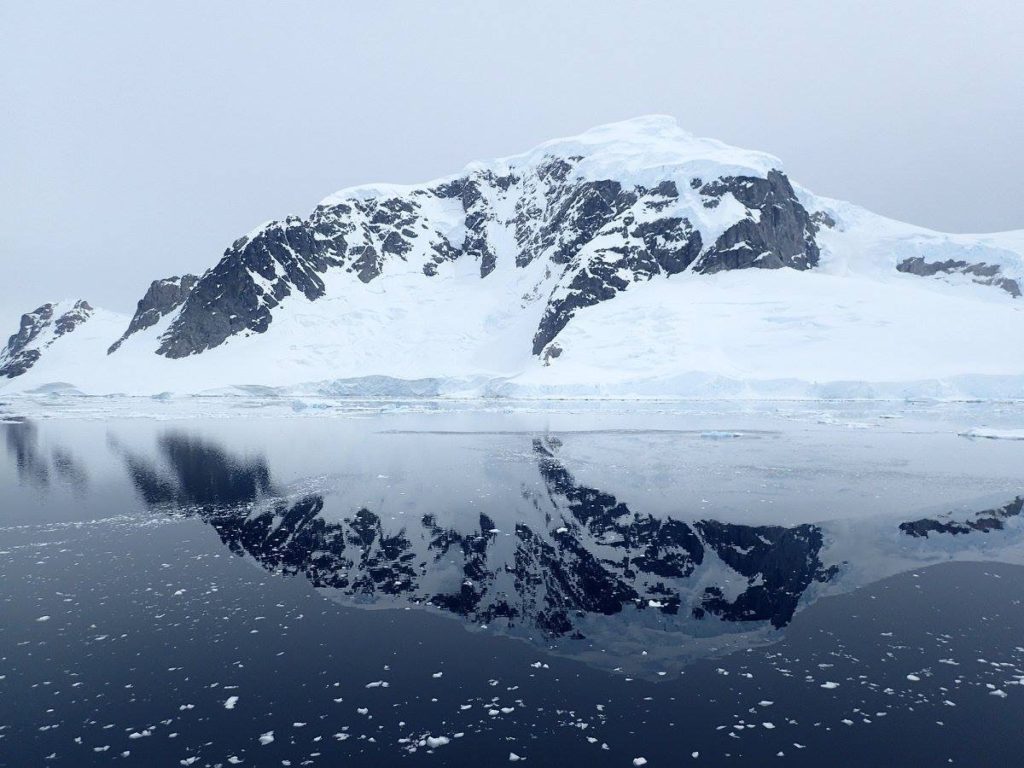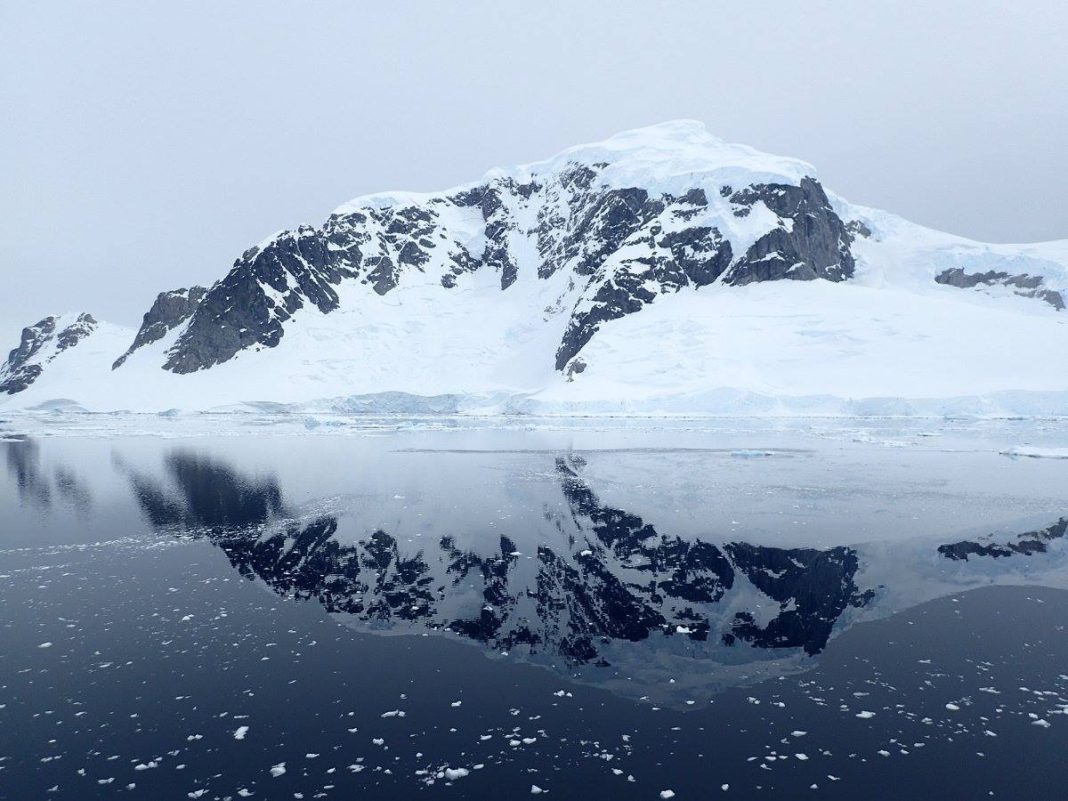“Hurry, hurry, hurry!” my husband urged as I fumbled with the zipper on my jacket.
Ten minutes earlier, our ship captain delivered the wake-up call of a lifetime: the crew had spotted killer whales teaching their young to hunt!
We ran up the stairs, opened the door to the deck and felt a slap of cold air on our faces. Under the pale pink sky, killer whales circled an ice sheet nearby.
“Wow,” I whispered to my husband, “I can’t believe we get to see this.”
It was a scene straight out of a National Geographic documentary, but I’m hardly the explorer type. I get seasick. I’m scared of heights. I hate turbulence and once grabbed the hand of a stranger on a bumpy flight.
Yet here I was, watching killer whales hunt next to our ship in the remote Antarctic Peninsula. So remote that I needed medical clearance from my doctor to board. And $500,000 in travel insurance in case I needed to be airlifted out—like Buzz Aldrin.
We had initially planned to visit Europe in November but scrapped that idea after a travel agent warned us about the cold. That’s when my husband proposed an even crazier idea:
“How about…Antarctica?” he asked with a flourish of his hands.
“You’re nuts,” I replied.
“It would be an epic way to spend your birthday,” he countered.
I had concerns.
For one, I get seasick easily. How would I survive four days of the “Drake Shake?” Even motion sickness medicines are no match for 20-foot waves on Drakes Passage—where the Atlantic, Pacific, and Southern Oceans converge.
And, wasn’t Antarctica just a bunch of ice? As it turns out, Antarctica is so much more — otherworldly copper, gray and mustard-colored boulders, snow-capped mountains, and ice in stunning hues of blue. Antarctica is killer whales and humpback whales breaching right in front of your ship, whale bones strewn on the beach, and crude stone huts from explorers gone before.
But, what would we even do there? Plenty, I discovered. Kayaking, hiking up volcanic calderas, and even sliding down glaciers on our bottoms!
Wouldn’t it be too cold? Oh, yes. It’s so cold that you have to warm your cell phone next to your body between photos so the battery doesn’t freeze. And when the wind kicks up, the cold actually hurts. But it’s so worth it.
Taking the (Polar) Plunge
After some research, we booked with Hurtigruten, a Norwegian expedition company. Their 14-day itinerary would take us to the Antarctic Peninsula via Drakes Passage. (I didn’t tell my mother just how sketchy Drake’s Passage was until we returned.) We would explore Deception Island, Yankee Harbour, Paradise Harbor, Lemaire Channel, Port Lockroy, Wilhelmina Bay, and Brown Bluffs. And we would do it in style—our ship had a glass-enclosed observation salon, gym, two hot tubs, and cutting-edge safety features for extreme polar conditions.
The Drake Shake
We flew from the U.S. to Ushuaia, Argentina, known as the southernmost city in the world. From there, we boarded our ship.
For two days, we braved the temperamental Drakes Passage. Instead of the “Drake Lake,” we got the “Drake Shake” — towering waves, gale force winds. For several hours each day, I was so seasick that I couldn’t even sit in bed. In fact, I threw up twice during the trip. (My husband likes to remind me I missed the bag the first time.) After one particularly rough night, we found drinking glasses, pens, and other items on the floor.
Land Ho
After being tossed around in Drakes Passage, I felt relieved to spot land. Over the next few days, we sailed the calmer waters of the Antarctic Peninsula and landed ashore on small explorer boats known as zodiacs.
One of our first stops was Base Esperanza, a year-round Argentinian base. As the story goes, Antarctica’s first baby was born here in the 1970’s as a way to stake claim to the continent. Today, several families live here year-round.
On the base, we saw vibrant red buildings and the ruins of a stone hut where a Swedish expedition survived a harsh Antarctic winter in the 1900s. We also toured a small, sweet church and a school, even meeting a five-year-old student in ski pants.
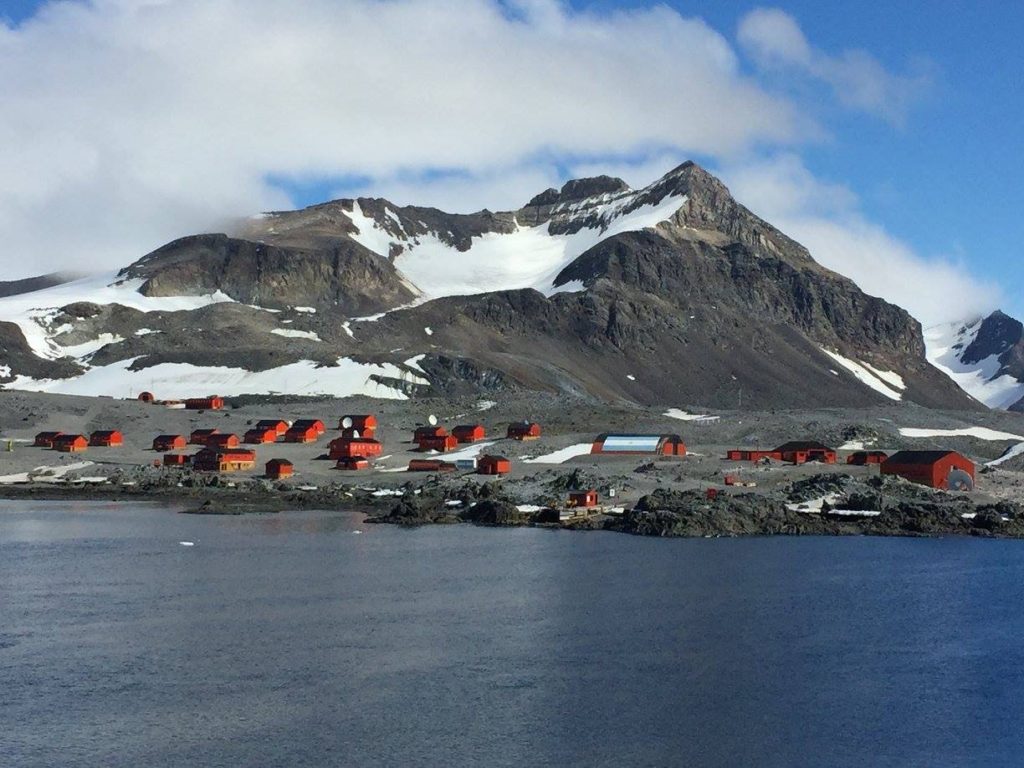
Postcard-Perfect Port Lockroy
We also made it to Port Lockroy, the first British permanent base established in 1944. Today, it’s a museum and post office operated by the UK Antarctic Heritage Trust.
Our captain’s first attempt to land at Port Lockroy failed—the ice was too thick to break through. On his second try, the captain maneuvered the bow of our nearly 400-foot long ship onto the ice and parked.
The crew worked fast, breaking a trail through the ice and keeping it clear so our zodiacs could get to shore and back. Once onshore, we explored musty rooms, filled with remnants of base life years ago—dusty mugs hanging from shelves, a peeling picture of a pinup on the wall, a recording of a vintage radio broadcast. I bought a tapestry of the Antarctica peninsula and some other souvenirs from the Port Lockroy gift shop. And we mailed postcards from their “Penguin Post Office” — with actual Antarctica postmarks — back to our families in sunny California.


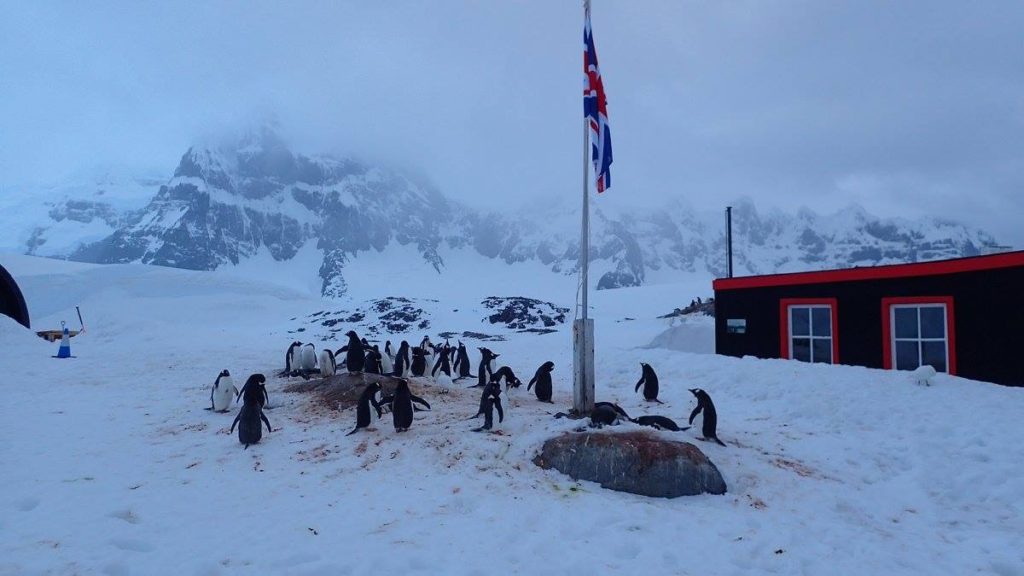

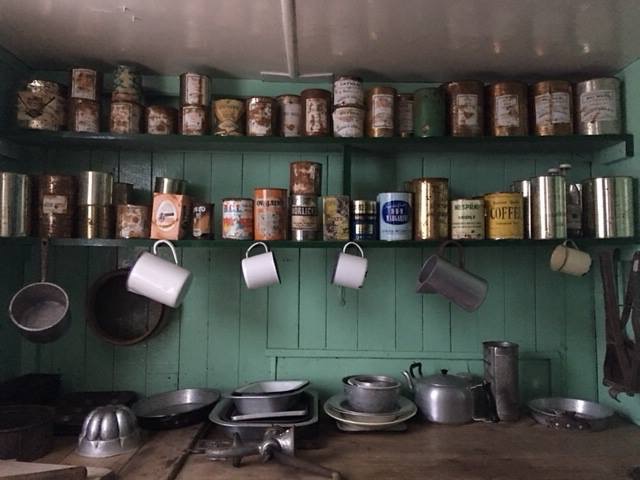

Traffic Jams on Penguin Highways
Since I love kayaking, my husband and I joined a small group to kayak around Cuverville Island. We paddled by surprised seals, heard the rumble of glaciers cleaving, and saw the largest Gentoo penguin colony on the Antarctic Peninsula.
Graceful in water but a tad clumsy on land, the penguins waddled around and flopped on their bellies, using their flippers to motor forward. Cute and comical, they crossed glaciers by tobogganing down “penguin highways,” sometimes bumping into each other in adorable traffic jams.
We also saw Adelie and Chinstrap penguins on the Antarctic Peninsula — tottering after each other, coasting down penguin highways, following each other dutifully into the water. We saw a skua bird swoop in to steal a penguin egg. And nesting penguins scolding others who were trying to steal their stones.
As our ship pulled away from the Antarctic peninsula, a lump unexpectedly formed in my throat. “I’ll miss those little guys,” I said to my husband. “Me too,” he replied.
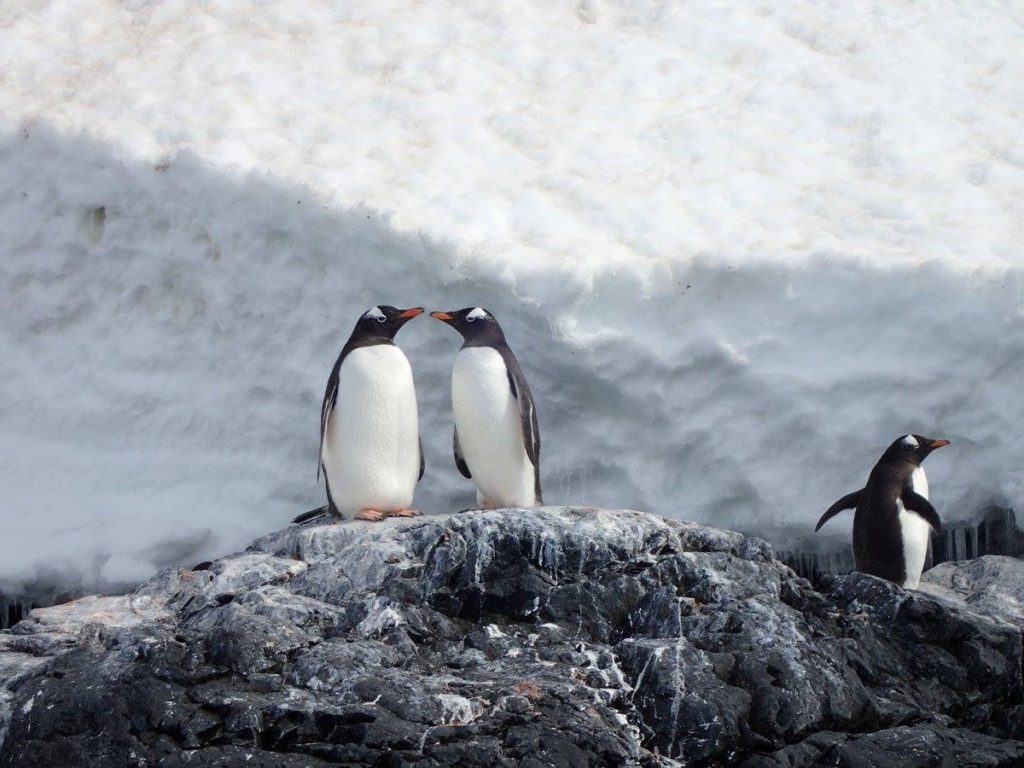

The Trip of a Lifetime
After we returned to Ushuaia, my husband filmed as I reflected on our trip. “It was phenomenal,” I said, wiping tears away. “I feel so lucky to see a place that most people don’t get to visit in their lifetime.”
I had underestimated Antarctica’s beauty. Glaciers the size of city blocks, bathed in soft pink, yellow, and blue light. Ombré “growlers” — tiny icebergs with white tops and turquoise bellies — bobbing alongside our ship. Humpback whales breaching in the water, orcas gliding beneath. And the reflection of stately mountains in the mirror-like water below.


My Inner Explorer Emerges
In Antarctica, you’re constantly reminded of the risks. Every time our zodiacs landed, our guides laid out our survival gear first. Each passenger had to attend an emergency drill and survival suit training. (While I tried not to get wet, my husband did the “Polar Plunge” in 35.6° F water and swim trunks!)
Antarctica pushed me out of my comfort zone. But I survived Drakes Passage (and have a t-shirt to prove it). I’m not a fan of heights, but I hiked alone up a caldera where I couldn’t see past a few feet. I slid down a glacier and kayaked in freezing water.
In Antarctica, I did things that I didn’t think I was brave enough to do. And it’s made me more confident today.
The Adventure Continues
After we returned, many people asked, “Where do you go from Antarctica? What’s next?” I ended up getting pregnant two months later, and we’re now on the greatest adventure of all — parenthood.
I still think of Antarctica frequently. I think of the friends we made on the ship—Sonny and Christine, two travel writers from the East Coast. And Archana and Raghav, our bubbly friends from New Zealand.
I proudly wear my “I survived the Drake Passage” t-shirt and my Antarctica baseball cap around the suburbs of the San Francisco Bay Area. When I put them on, I feel like a brave female explorer — going where so few have set foot before.
If You Go
Book an Antarctica cruise: We booked with Hurtigruten. Visit their website for the latest information on available tours and rates (www.hurtigruten.com). Hurtigruten arranged for our hotel in Ushuaia, transfers to the boat, and the cruise itself with full room and board.
How to get there: From the U.S., we flew to Buenos Aires and caught a regional flight to Ushuaia. (We used United Airlines and Aerolineas respectively.) From Ushuaia, we boarded our ship to the Antarctic Peninsula.
What to do In Ushuaia: Get a massage at the lovely Las Hayas hotel followed by a forest hike nearby. You can also have a drink at the swanky Arakur Resort and Spa (where Leo DiCaprio reportedly stayed while filming The Revenant) and venture up to the summit of scenic Mt. Alarken.
Cost: Hurtigruten’s Antarctica cruises range from approximately $11,000 – $20,000 per person, as of January 2019. You may be able to snag a discount by booking early or booking last minute. When planning your trip, remember to factor in travel insurance and gear. (We paid about $1,000 for gear for two people.)
